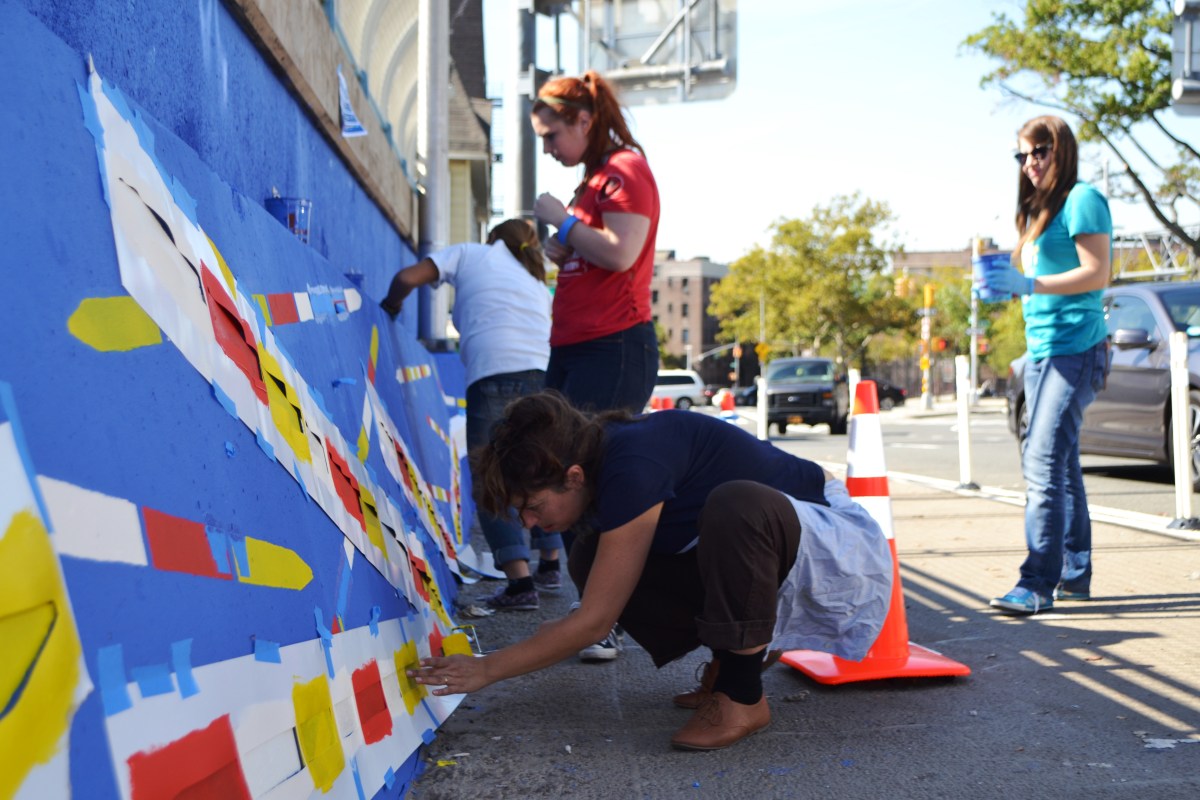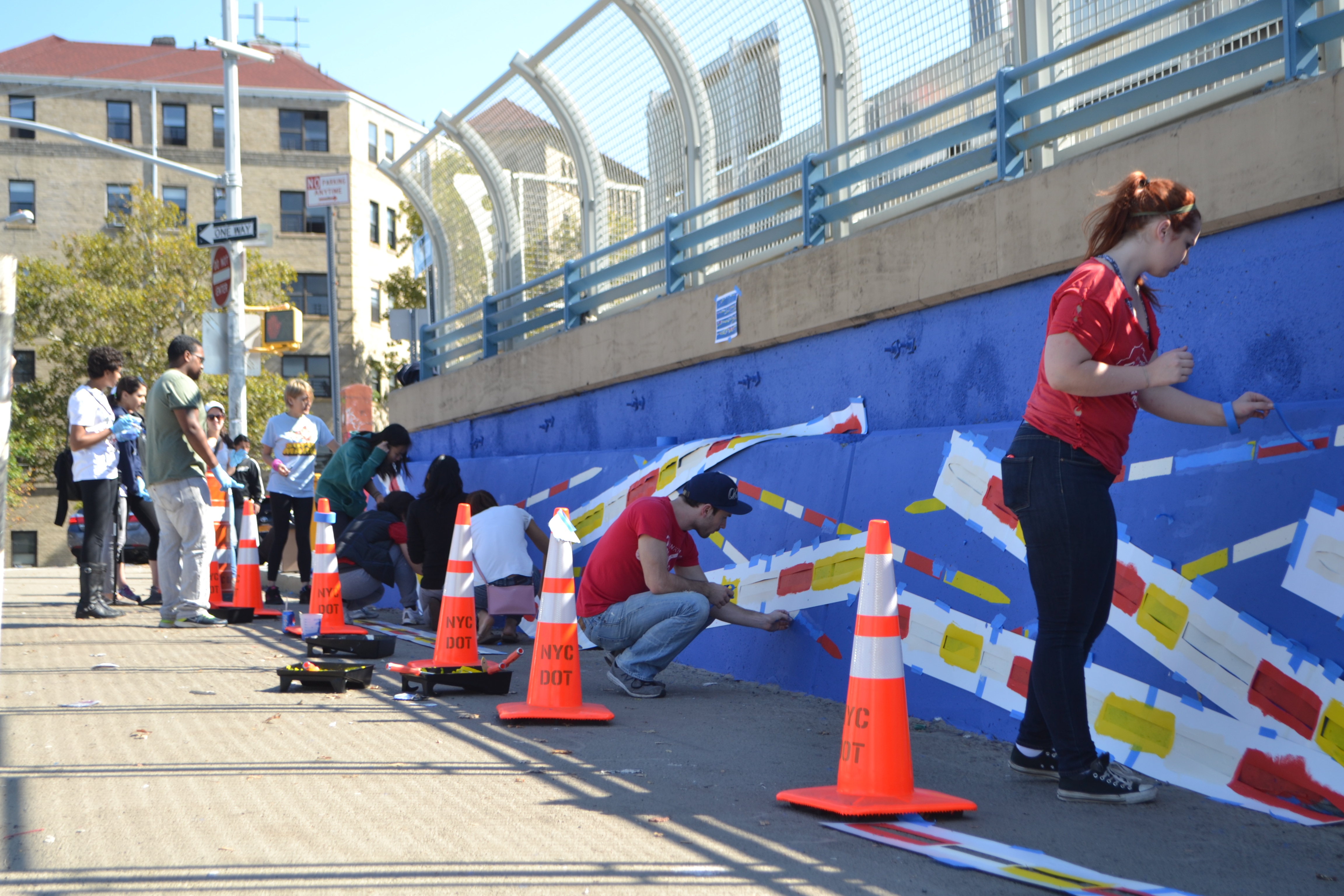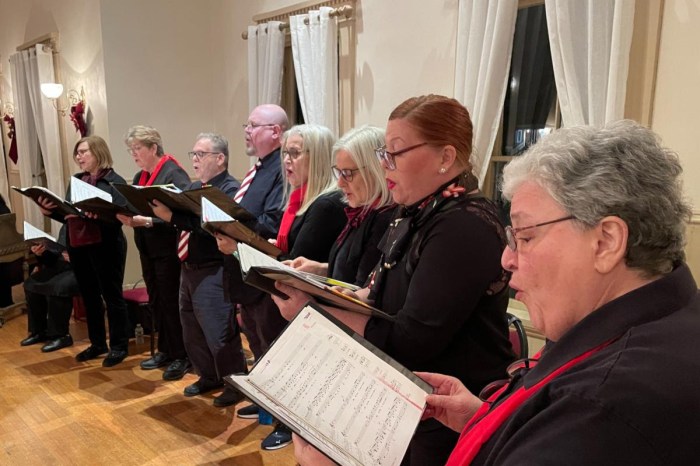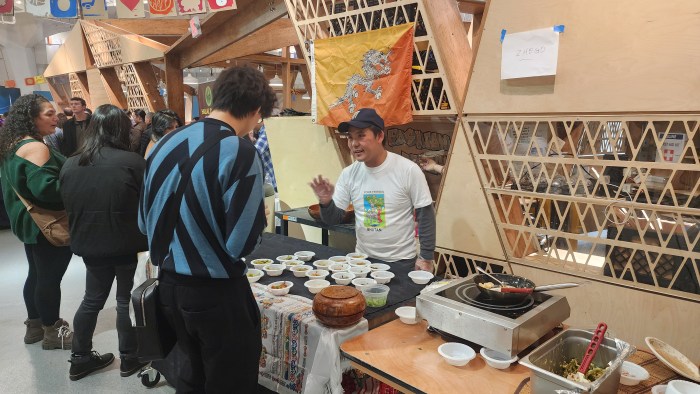One busy overpass filled with traffic from pedestrians, vehicles and bicycles has received a stroke of color.
The overpass’s pedestrian walkway, located at 37th Avenue and 69th Street, connecting Woodside and Jackson Heights, and above the Brooklyn-Queens Expressway, was painted on Friday as part of the Department of Transportation’s Barrier Beautification program.
According to Emily Colasacco, director of the DOT Public Art Program, the site was chosen because recently one lane of traffic was transformed into a pedestrian safety area to connect the sidewalks on both sides of the overpass.
“The goal was to really beautify the space and call attention to this new pedestrian safety refuge,” Colasacco said. “We’re always looking for simple designs, bold colors and something that is really going to pop off the barrier, something noticeable from afar.”
Artist Eirini Linardaki, alongside volunteers from the organization New York Cares, worked from the morning into the afternoon painting the 150-foot concrete barrier of the walkway blue, red, yellow and white.
“It starts off as a concrete slab and by the end of the day it’s this beautiful mural,” Colasacco said.
The painters implemented Linardaki’s design, called “Composition in blue, yellow and red – homage to Piet Mondrian,” which depicts the game of pick-up sticks.
“I just wanted to use a game, I wanted to use something that is fun and could be interpreted in so many ways,” said Linardaki, who has been involved in public art projects for the past five years in New York City, France and Greece. “You want to create involvement and awareness, you want to allow people to be in contact with art and there’s no better way than public art.”
Along with depicting what Linardaki called a “retro” game, she said she hopes for it to be seen as an abstract art or as a New York City grid.
“I like the fact that people don’t know that it’s here; people are going to discover it when they’re passing by,” Linardaki said. “I do a lot of public art projects, because first of all it’s so direct and sometimes it draws people’s attention to spots they were not going to look at. It gives them a different perspective of their city.”
Barrier Beautification projects are temporary and Linardaki’s piece will be up for one year. The DOT will then revisit the site and decide what other art pieces can be implemented.
RECOMMENDED STORIES





































